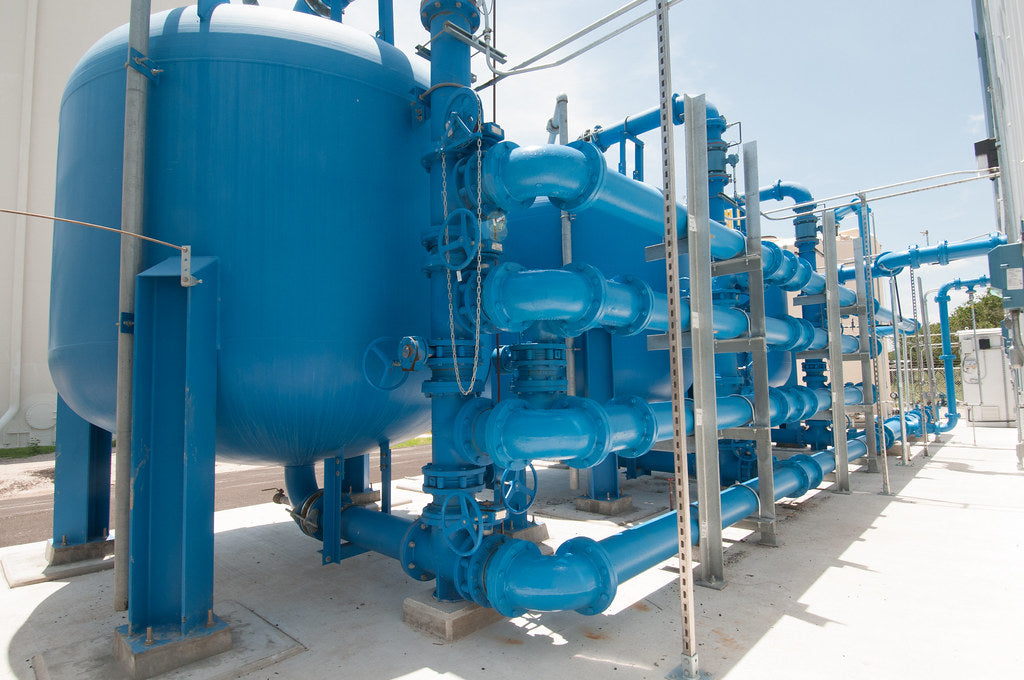If there is a slight change in the odor or taste of your drinking water, you will become cautious about it. However, if there is nothing, it does not mean that the water is safe for you to drink.
That is the case with arsenic in your water, which is not detectable because it's odorless and tasteless. But, it can do serious damage to your body organs and, in worst cases, can even lead to death.
So, what is arsenic? How does it get into your water? How can you get rid of it? In this article, we will be answering these questions so you can get a better idea of the dangers it poses.
What Is Arsenic?
Arsenic is a highly contagious and one of the most toxic inorganic forms. It is also one of the most abundant elements on the surface of the earth. It naturally occurs in the soils and rocks. And there is a chance that it is in your water as well.
It goes by the symbol AS in the periodic table with the atomic number 33. It has several allotropes since it is a metalloid. Among all of its allotropes, the most common ones are yellow, black, and gray.
One of the key characteristics of this chemical element is that it is tasteless and odorless. That is why in the past, people used it to poison others. It is because of this reason you might not feel any change in your drinking water.
As a result, it can go undetected, causing many health problems.
How does it come into your drinking water?
Now, you might be wondering that how such a dangerous component enters your water supply system? Although it is not safe for consumption, its usage is pretty common in multiple industries.
For instance, the wood industry uses it to preserve the wood because of its toxicity to insects, bacteria, and fungus. Also, the CCA (Chromated Copper Arsenate) uses arsenic for its industrial purposes. Although the US and Europe don't allow its usage, other countries still use it.
Apart from these, the car industry uses arsenic for batteries and other parts. Since its usage is in manufacturing and other industrial processes, it makes ways through which it can enter your water supply system.
If you live near a manufacturing or industrial zone, you are prone to have it spread in your water supply system. Besides this, if you live in an area with arsenic-heavy bedrocks, you are vulnerable to having it in your water supply.
Furthermore, wildfires can also become a source of arsenic. These fires spread ashes throughout a particular region, which has a high amount of arsenic in it. As a result, you are more likely to find it in such areas.
With its ability to enter into the water system through natural ways, it is difficult to stop it from getting into your water supply. However, there are ways to ensure it doesn't end up in the glass of water you are about to drink.
You can test the water quality to check if it's free from all the harmful components or not. Plus, there are other ways to remove it from the water supply line as well. We will be discussing them later, but before that, let's discuss some health issues that arsenic can cause.
Health Effects of Arsenic
Arsenic is highly dangerous and is considered poison for the human body. Even in small doses, it can lead to numerous health issues. As per the World Health Organization, it is the cause of numerous health problems such as cancer, infant mortality, etc.
Since it's at a high level in the groundwater around the globe, many people are vulnerable to these harmful health effects, which can lead to death in severe cases. Some of the acute issues include:
- Diarrhea
- Vomiting
- Nausea
- Muscle cramping
- Stomach pain
- Fatigue and numbness
These are some of the short-term effects of arsenic. If you consume it for a longer time, it can have a serious negative impact on your essential body organs. The bladder, skin, kidneys, and other vital internal organs can get affected.
Apart from that, your external organs such as the eyes, nose, and skin can also be subject to adverse effects. Here are some of the impacts that can lead to illnesses and death in some instances:
- Organ failure
- Pigmentation changes
- Skin cancer
- Cardiovascular issues
- Diabetes
- Pulmonary diseases
How to Get Rid Of Arsenic from Your Drinking Water?
Now that you have a complete understanding of what arsenic can do to you, it is time we move on to how to eliminate it. As per the EPA, the bare minimum level for drinking water is around ten parts per billion.
This means that if you have anything above ten micrograms per liter, then it is not acceptable. While going for a centralized filtration plant might be a good idea, it is a costly one. So, it would be a better option to take care of this problem on your own.
That is why you should go for a whole-house water filter system for your home. By doing so, you can filter out all of the harmful components. As a result, you can ensure that you are consuming safe water. Therefore, by finding the best water filter for your home, you will get rid of this problem.
Verdict
We hope you now have enough knowledge about how dangerous arsenic is. So, if you still are not sure if there is arsenic in your water, then it is time you need to test the water quality.
Once complete, you can now take the relevant steps to get contamination-free water. By finding the best water filter system for your home, you can ensure that you and your family have water free from arsenic. The best one among them is Reverse Osmosis.
Installing this filter, you can get pure water, free from any containments. It is also a common type of filter that many water bottle companies use. Due to its low cost, it is ideal for both residential and commercial use.






